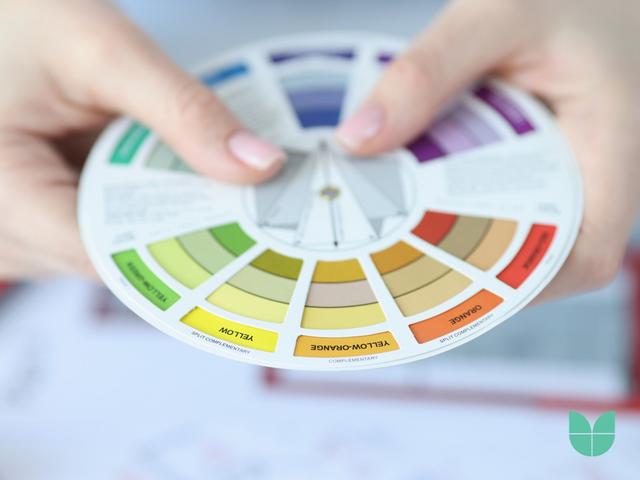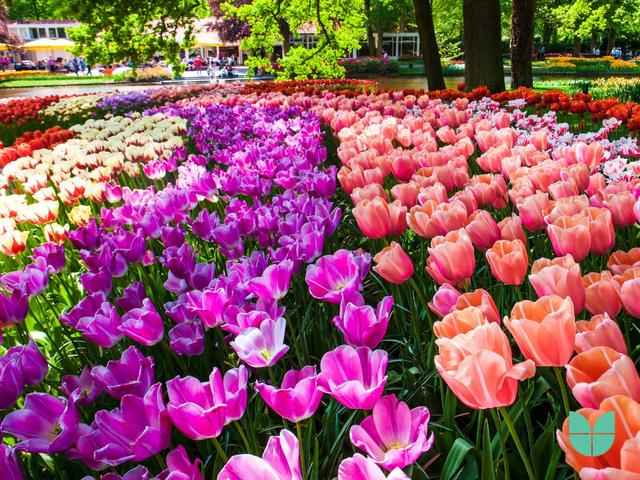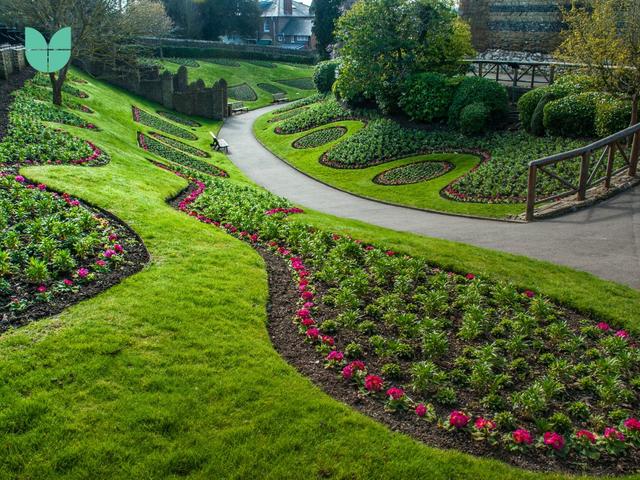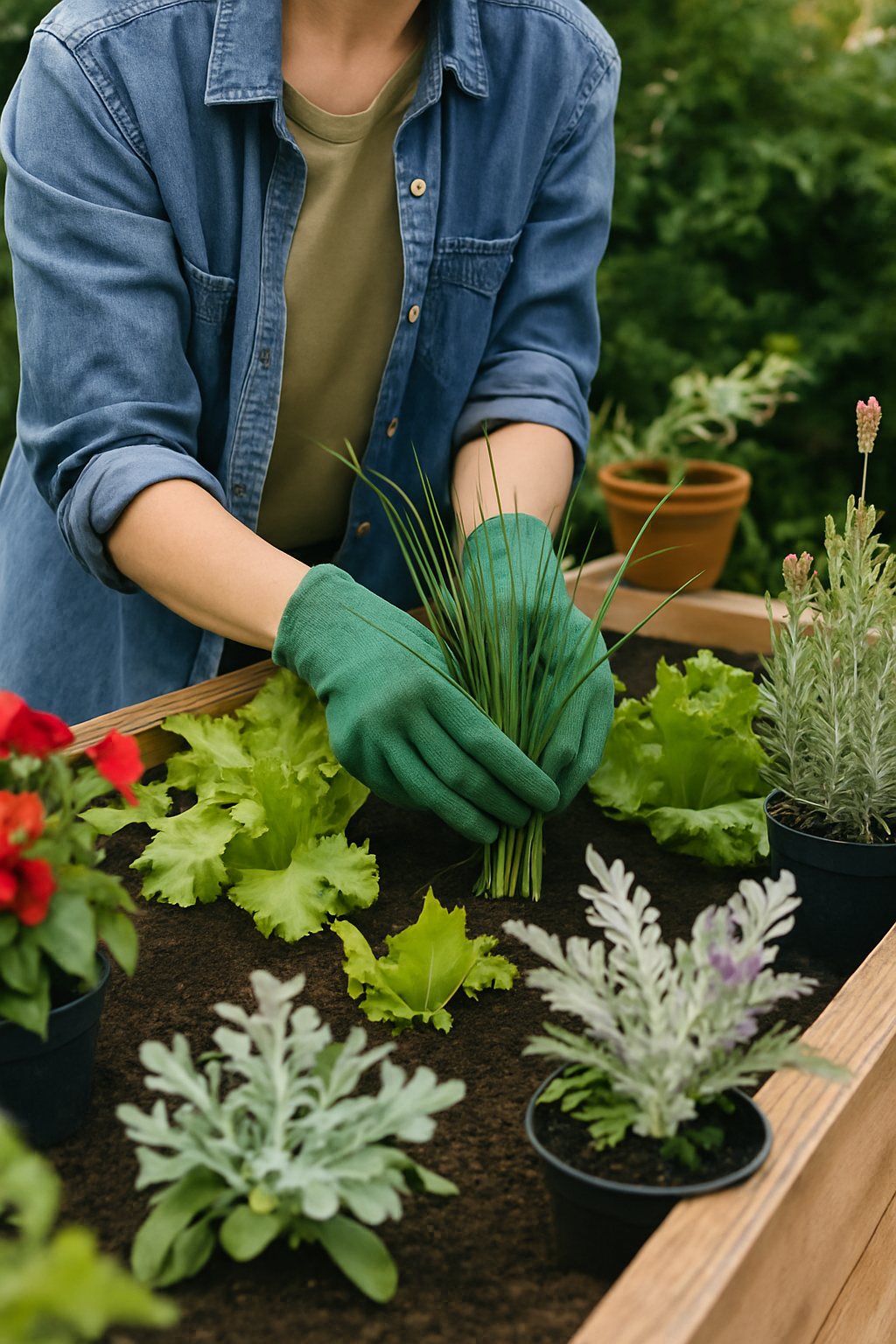Designing a beautiful garden is no different to creating a piece of art. The strategic use of colour not only elevates the visual appeal of your garden but also influences its mood and atmosphere. This guide will explore the essential principles of using colour in the garden, focusing on complementary and contrasting palettes as well as colour schemes to help you craft a space that is both beautiful and emotionally resonant.
The foundation: Understanding colour theory
The basics of colour theory break down as follows:
-
primary colours - red, yellow and blue
-
secondary colours - created by mixing primary colours
-
tertiary colours - mixtures of primary and secondary colours
The colour wheel is a great starting point for any colour research and is a crucial tool for gardeners looking for guidance on their plant selection and arrangement. It can help you achieve harmony, contrast and cohesion.

Harmonious colour schemes
Think of your colour scheme as though it’s a theme or mood of your garden. Allow your garden to tell a story. Here are some approaches:
Monochromatic:
This scheme uses shades, tints, and tones of a single colour, creating a serene and cohesive space. It's perfect for highlighting the diverse textures and forms within your garden.
Analogous:
By selecting colours that sit side by side on the colour wheel, you can create a harmonious and understated garden that's soothing to the eye.
Complementary:
For those who love a dynamic garden, using colours opposite each other on the colour wheel ensures a vibrant and eye-catching contrast.
Triadic:
Choosing three colours evenly spaced around the colour wheel brings a lively and balanced diversity to your garden, combining harmony with boldness.
The dynamics of colour matching and contrast
Colour matching:
Striking the right balance in colour matching involves pairing hues with similar tones and intensities to create a visually cohesive space that feels unified and tranquil.
Colour contrast:
Contrast adds depth and interest, achieved not just through colour but also texture and form. It directs attention and can accentuate key features or plants.

Deepening your garden's palette: Advanced tips
Seasonal planning:
Consider the different bloom times of plants to maintain a consistent colour theme. Seasonal planning ensures your garden transitions smoothly from one season to the next, always providing something of interest.
Emotional landscapes:
Colours influence mood. Warm hues energise a space, while cool colours soothe. Use colour to create the desired emotional atmosphere in different garden "rooms."
The power of white:
White acts as a neutral in the garden, offering a visual break and making surrounding colours pop. It’s particularly effective in moon gardens, designed to be enjoyed by the light of the moon.
Lighting:
Sunlight can dramatically alter how colours are perceived. Utilise bright colours to illuminate shaded areas and cooler hues to bring tranquillity to sun-drenched spots.
Green as a unifier:
Green in its many shades is the backbone of garden design, providing a restful background against which other colours stand out.

Adding depth and texture
Coupled with colour, texture also plays a starring role in the drama and beauty of a garden. Fine textures, such as those found in ferns or delicate foliage, can make a space feel larger and lighter. In contrast, bold textures from plants like large-leafed hostas or ornamental grasses add weight and interest. Combining different textures adds complexity and depth to your garden, enhancing the visual impact of your chosen colour scheme.
Personalising your garden
When designing your own garden, the most gratifying and ultimately, the most comforting aspect will be a design that reflects your personal taste and fulfils your needs. Whether your dream garden is a calm retreat or a lively, vibrant space for entertaining, your choice of colours and how you combine them can create a unique atmosphere.
As well as colourful plants and flowers, incorporating benches, sculptures, or paths to complement your garden's colour scheme can really make a space pop.
The thoughtful use of colour can transform a simple garden into a stunning oasis. By understanding the principles of a creative use of colour you can achieve a garden that delights the senses throughout the year. Remember, gardening is an art form that allows for personal expression and creativity and is a proven contributor to health and wellbeing. Don't be afraid to experiment with colours and textures, and most importantly, create a space that brings you joy and serenity.
Whether you're only just becoming interested in your garden or you are in fact a seasoned green thumb, our expert-led courses offer a deep dive into the art and science of garden design. From mastering colour theory and understanding the nuances of plant selection to creating harmonious landscapes that reflect your unique style, our courses appeal to all abilities. With access to hands-on projects, exclusive resources, and a community of fellow garden lovers, you'll learn how to design breathtaking gardens that will thrive throughout the seasons. Don't miss this opportunity to turn your garden into the space you’ve always dreamt of, or perhaps you are interested in becoming a professional garden designer? Check out our courses and see where it takes you.

